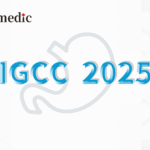
The 2025 National Breast Cancer Conference was held in Beijing from April 11 to 13, 2025. During the conference, Professor Yinhua Liu from Peking University First Hospital delivered an in-depth interpretation of the newly released 2025 edition of the Chinese Medical Association Guidelines for Clinical Practice in Breast Surgery.Following the conference, Oncology Frontier invited Professor Liu for an exclusive interview to further elaborate on the updates in the 2025 edition, the latest advances in surgical treatment for breast cancer, and how the field of breast surgery is moving toward more precise and personalized approaches.Oncology Frontier: At this year’s conference, you presented an overview of the updated 2025 edition of the Chinese Medical Association Guidelines for Clinical Practice in Breast Surgery. Could you summarize the key messages from your presentation for our readers?
Professor Yinhua Liu: Since its establishment in 2017, the Breast Surgery Group of the Surgery Branch of the Chinese Medical Association has released three editions of the Chinese Medical Association Guidelines for Clinical Practice in Breast Surgery. The 2025 edition remains a surgery-oriented guideline, and this update primarily focuses on refining the levels of evidence supporting prior recommendations.
A particularly important addition in this version is the clinical management of early-stage breast cancer patients with gene mutations. This aligns closely with the views outlined in the St. Gallen International Consensus on Early Breast Cancer. One of the central questions addressed is: How should treatment proceed for breast cancer patients with genetic mutations? And more specifically from a surgical perspective—should bilateral prophylactic mastectomy and implant-based reconstruction be considered? The guideline’s position is in agreement with international expert opinions on these issues.
Moreover, the 2025 edition emphasizes that high-risk individuals should undergo genetic testing, and if a clear indication and relevant genetic mutation are present, the guideline supports the recommendation of prophylactic bilateral mastectomy with reconstruction—which may include implant-based or autologous reconstruction.
Oncology Frontier: Over the past year, several studies on surgical de-escalation or reduced surgical scope have produced promising results. Does the updated guideline include any recommendations on these surgical techniques?
Professor Yinhua Liu: The 2025 edition of the Chinese Medical Association Guidelines for Clinical Practice in Breast Surgery does not provide specific recommendations on surgical techniques related to de-escalation. However, it’s important to note that in oncology overall—not just in breast cancer, but also in colorectal and gastric cancers—there is a growing trend toward minimizing the extent of surgery.
This trend has largely been driven by the growing precision of diagnostic tools and advancements in comprehensive treatment approaches, which have significantly improved patient outcomes. These improvements are gradually shifting the treatment paradigm from local therapy to systemic therapy. From a broader perspective, de-escalation in breast cancer surgery is undoubtedly a future direction. The main objective is to reduce surgical trauma, moving from organ removal to organ preservation whenever possible, thereby maintaining or improving patients’ quality of life.
In recent years, there has been growing awareness of the importance of breast-conserving surgery. For example, several recent clinical trials suggest that patients with negative axillary lymph nodes on imaging might be eligible to forgo sentinel lymph node biopsy. This concept has had a significant impact on clinical practice. One such study, the INSERM trial, was recently published in The New England Journal of Medicine and supports this shift. It raises an important question: can imaging-based staging eventually replace pathology-based staging? This is an area we need to pay close attention to in the future.
At the SGBCC conference, a speaker delivered a talk on the concept of the “physician’s paradox”—that physicians are both pioneers of new technologies and defenders of traditional practices. This paradox reflects the tension we face in questions such as whether sentinel lymph node biopsy can be omitted, or whether breast-conserving surgery should be further promoted. These remain open questions, and we need more evidence—particularly from clinical studies conducted in China.
At the 2025 SGBCC Conference, Professor Zefei Jiang led a Chinese team to host a special session titled “Voice of China”, allowing the international community to hear insights from Chinese experts. I believe this reinforces the need to conduct China-initiated clinical studies going forward.
To support this effort, the Breast Surgery Group of the Surgery Branch of the Chinese Medical Association is currently working to establish disease-specific clinical cohorts for breast cancer in China. Only by accumulating detailed and reliable data can we produce high-level evidence that will guide clinical research and ultimately improve clinical practice.
Oncology Frontier: To further promote precision and personalization in breast cancer surgery, how should future clinical guidelines be developed based on evidence-based medicine? And how should relevant research be conducted?
Professor Yinhua Liu: First, we need to clearly distinguish between a “consensus” and a “guideline.” A consensus refers to opinions formed by experts within a particular field on widely discussed topics. These are typically developed through literature reviews and are intended to provide directional guidance. However, consensus statements cannot directly guide clinical practice. What clinical practice truly relies on is high-level evidence from evidence-based medicine.
That said, high-level evidence generated primarily for drug registration purposes may have limited value for guiding clinical decisions in practice. Therefore, when developing clinical practice guidelines in China, we must first ensure that they align with China’s clinical needs, and then consider whether they may also serve global relevance. This is important because different countries have different healthcare insurance systems and distinct healthcare realities. For instance, some targeted therapies used abroad are not yet accessible in China, primarily due to differences in insurance coverage.
When drafting clinical practice guidelines specific to China, the work must be grounded in disease-specific cohort data. This is a major undertaking. We first need to build a comprehensive national real-world data cohort, and then conduct targeted investigations within this dataset to form actionable guidance. In this process, our focus should remain on the most pressing issues in clinical practice.
At present, one of the most prominent issues in breast surgery is the safety of de-escalation strategies. Without adequate research and evidence from clinical practice in China, it is not feasible to rely solely on experiences from other countries. This is particularly critical in the context of consensus statements, where contributors may come from various disciplines. When experts from one specialty comment on another, we must critically assess whether such views risk misguiding clinical practice.
In short, the development of clinical guidelines in China must be driven by local evidence, rooted in real-world data, and centered around China’s clinical reality—with a cautious approach to incorporating international consensus.
Oncology Frontier: The highly anticipated St. Gallen International Breast Cancer Conference has just concluded, and this year’s conference featured a special Best of St. Gallen session. Which topics caught your attention most at this year’s conference, and what are your thoughts on them?
Professor Yinhua Liu: In 2002, the American Joint Committee on Cancer (AJCC) released the 6th edition of its cancer staging system, which made tumor staging more measurable and standardized. This marked a foundational step for oncology, providing a basic principle for treatment: to determine therapeutic strategies based on disease stage. Before the 6th edition, imaging standards like MRI and ultrasound had not yet been clearly defined.
At the 2003 St. Gallen Conference, a major consensus was reached around treatment based on staging, clearly distinguishing between early- and late-stage disease. From 2003 to 2009, the conference primarily focused on risk-based treatment strategies. However, after 2011, the concept of “risk level” was no longer emphasized; instead, the focus shifted to treatment efficacy as the key criterion for clinical decision-making.
The 2025 St. Gallen International Consensus on Early Breast Cancer goes a step further than previous editions. While early-stage breast cancer remains the central topic, this year’s consensus raised a number of important surgical questions. These include de-escalation of surgical procedures, whether breast-conserving surgery should be recommended, and whether sentinel lymph node biopsy can be omitted in selected populations.
Another notable focus was the redefinition of oligometastatic breast cancer, which has been reintroduced as a key topic. In the past, whether local treatments were applicable in advanced breast cancer was unclear, largely because the category of advanced disease was too broad—ranging from patients with small, well-controlled tumors and good prognosis to those in critical or terminal stages. This wide variation made it difficult to define inclusion criteria for clinical trials.
The introduction of the oligometastasis concept could help establish clearer eligibility standards for future research into surgical interventions in metastatic breast cancer, and may provide a more structured basis for further exploration.
In summary, China’s large patient population offers a unique opportunity to develop approaches tailored to our own clinical realities. We must continue to build on local data and explore strategies that suit Chinese clinical practice, while also sharing our findings globally.
Professor Ronghua Liu
Chief Physician and Professor, Peking University First Hospital
- Standing Committee Member, Surgery Branch, Chinese Medical Association
- Head, Breast Surgery Group, Surgery Branch, Chinese Medical Association
- Deputy Chair, Surgery Branch, Beijing Medical Association
- Deputy Chair, Breast Disease Branch, Beijing Medical Association


